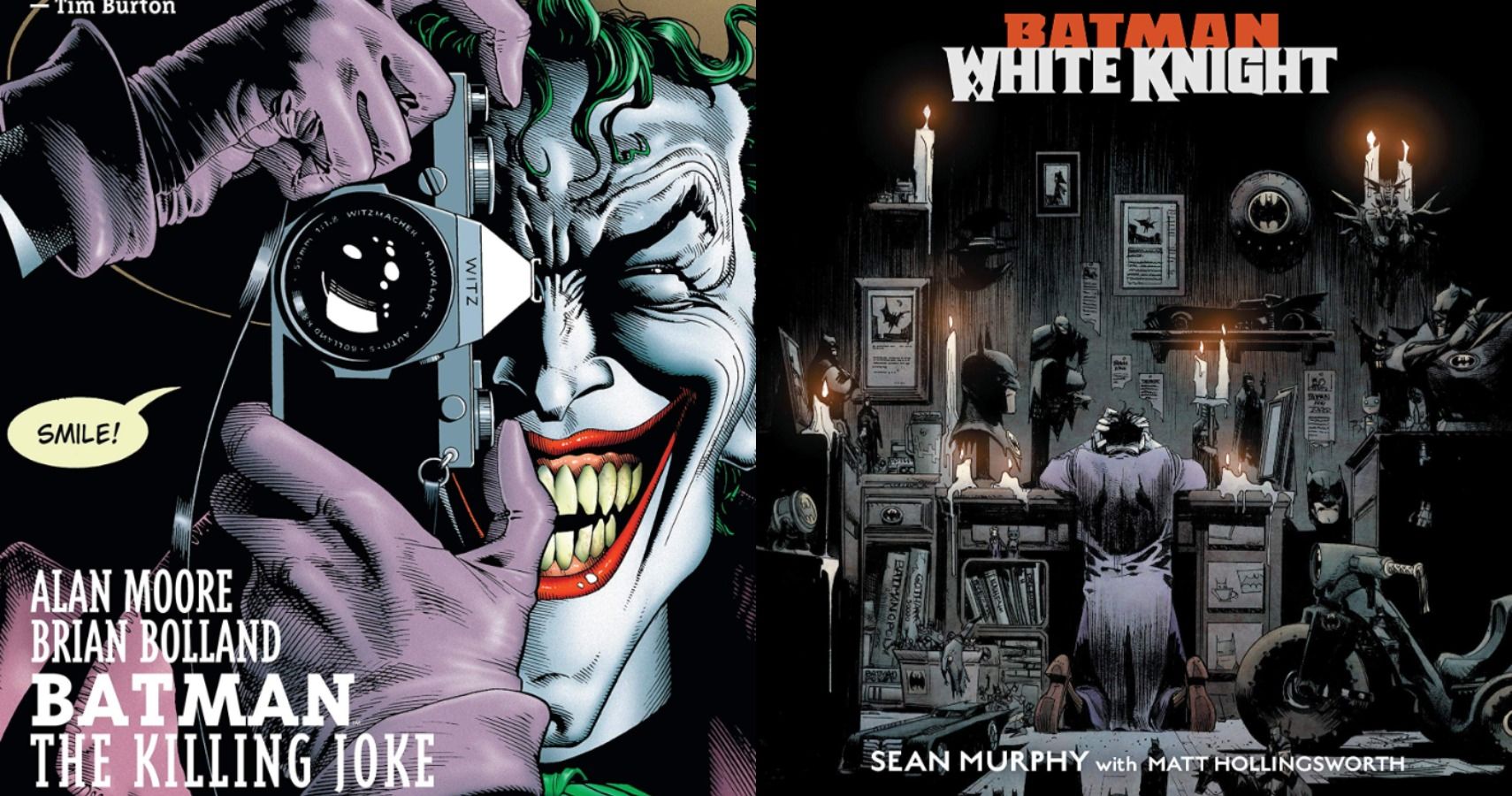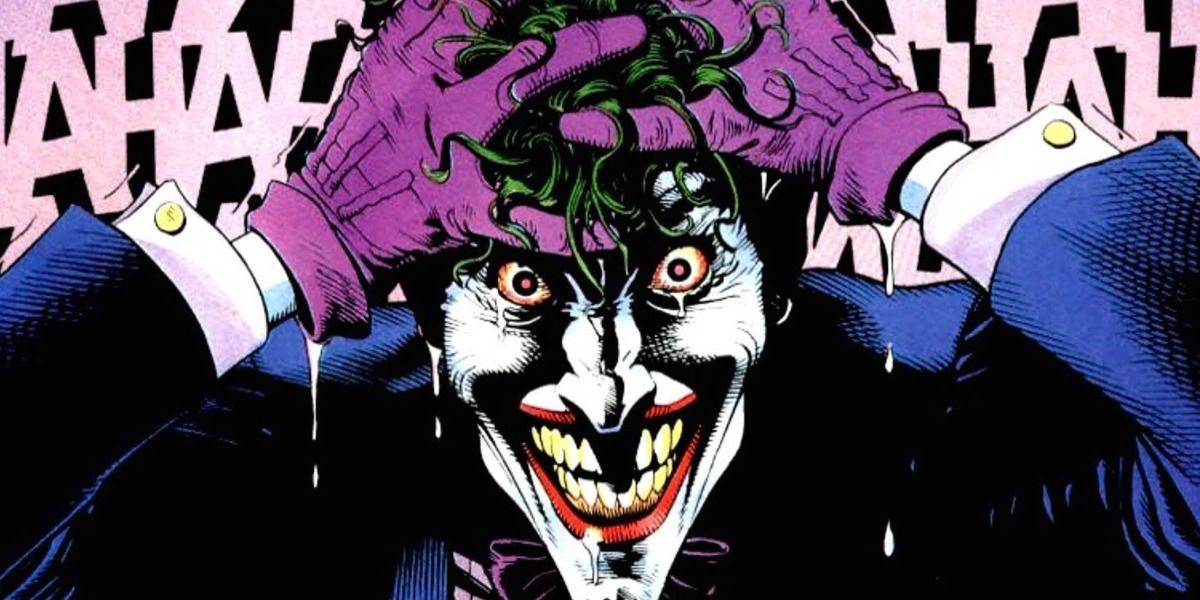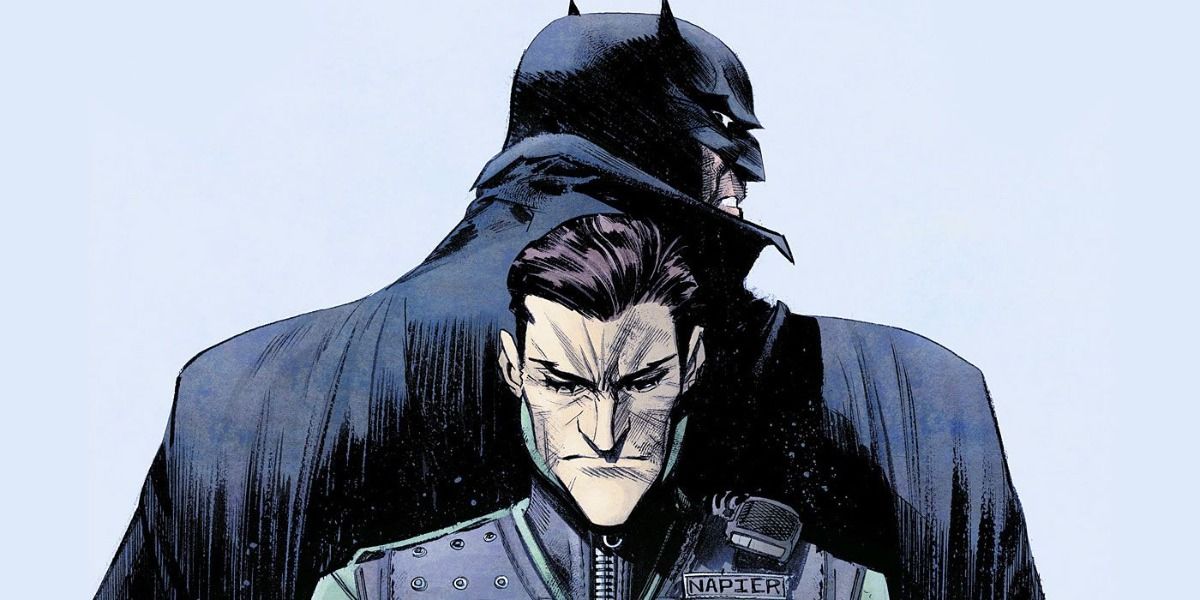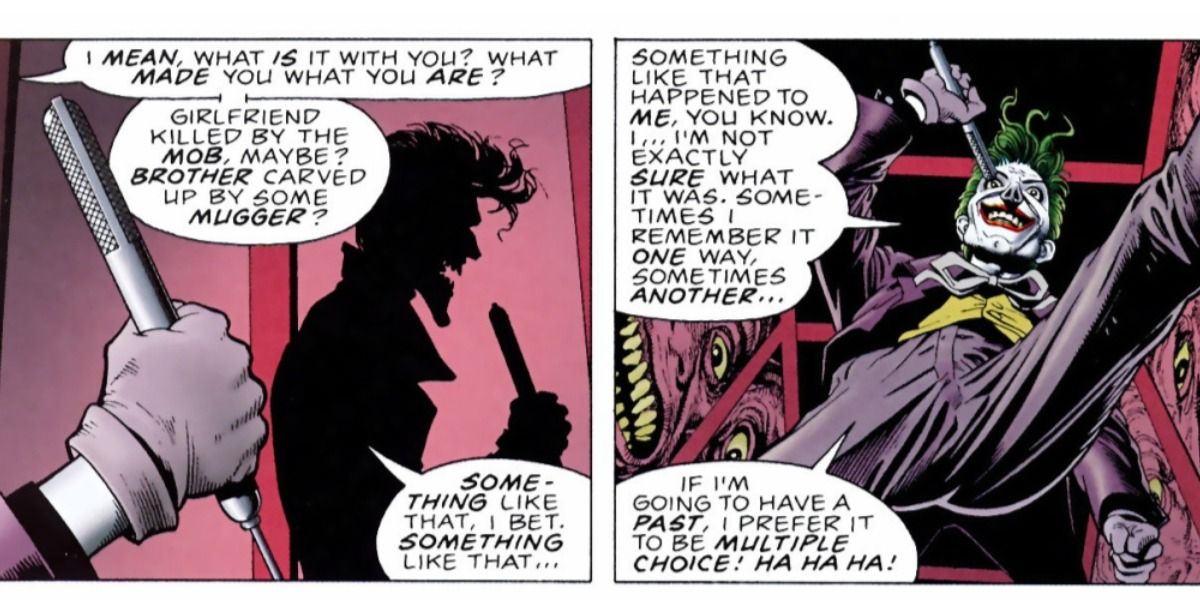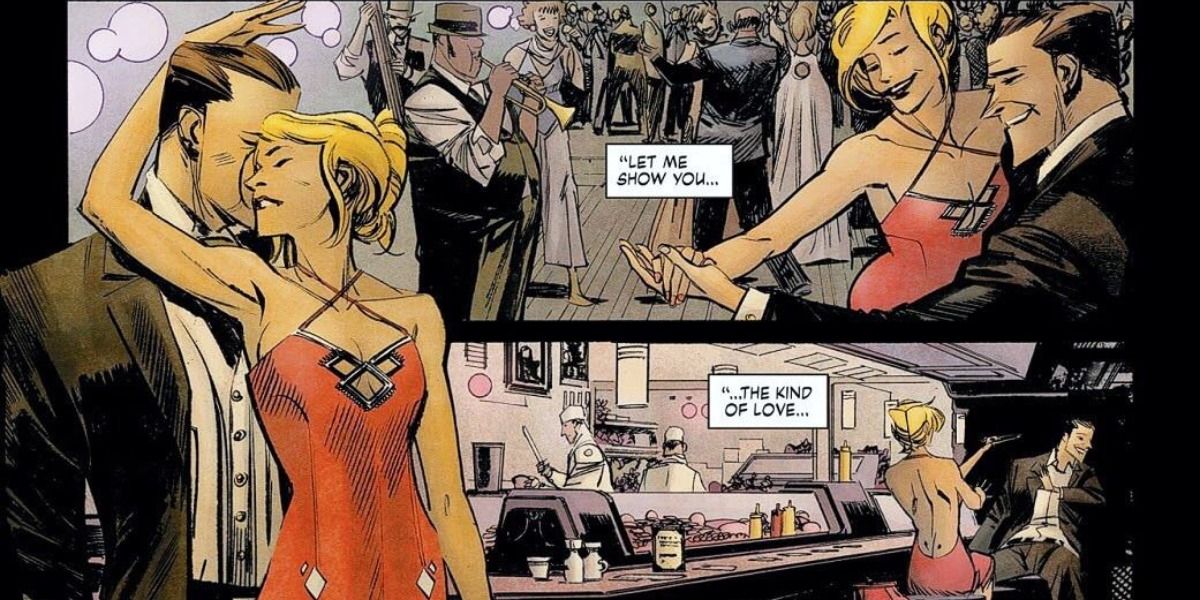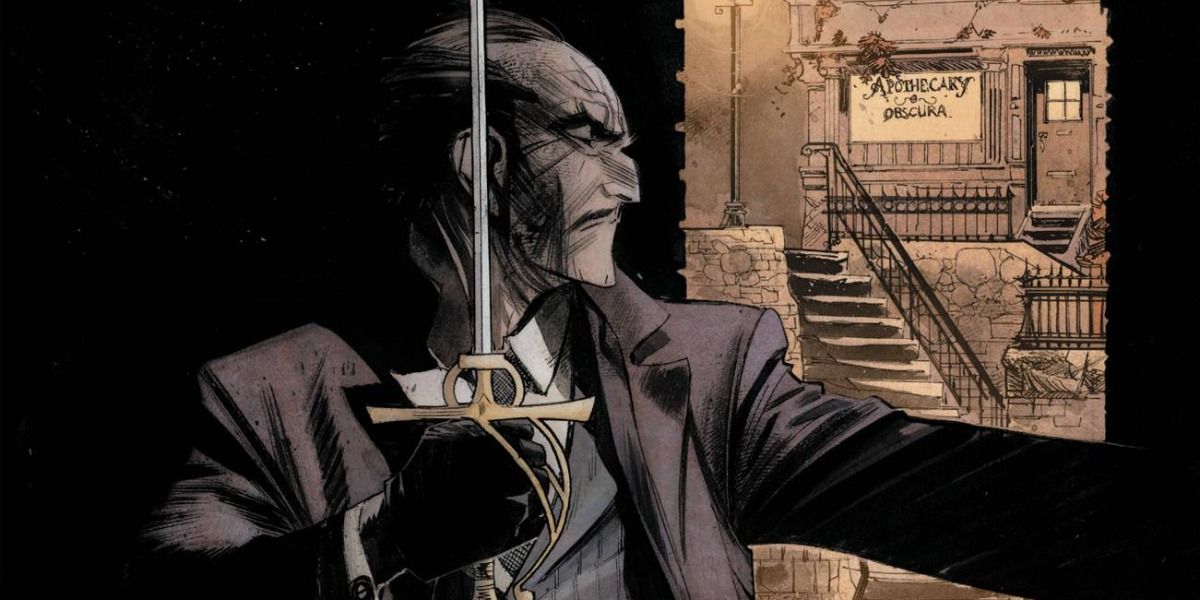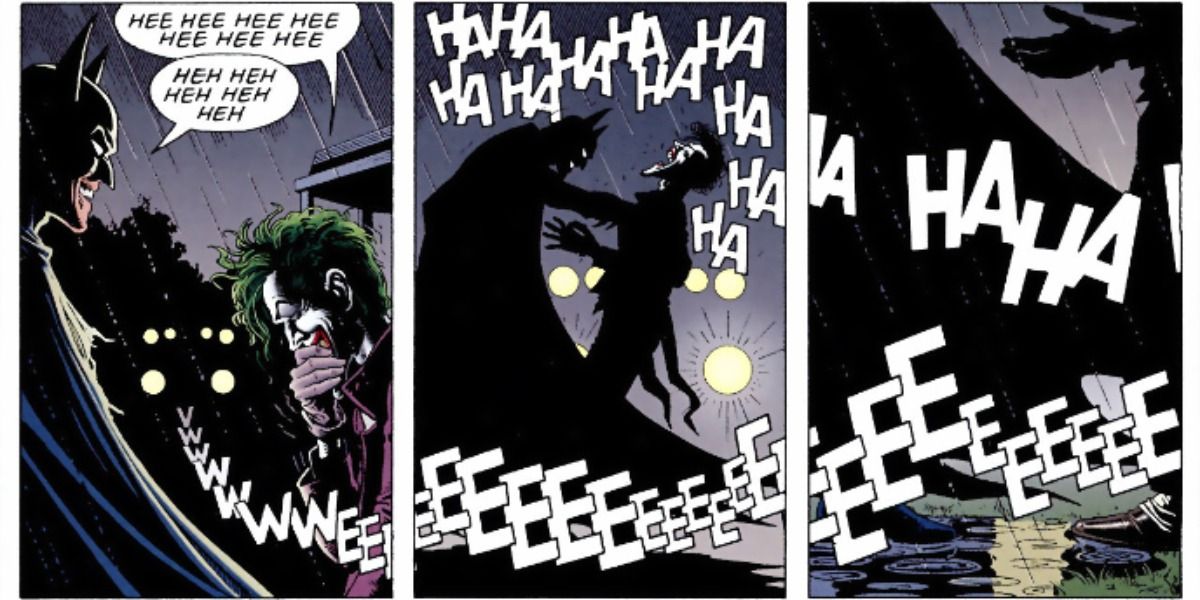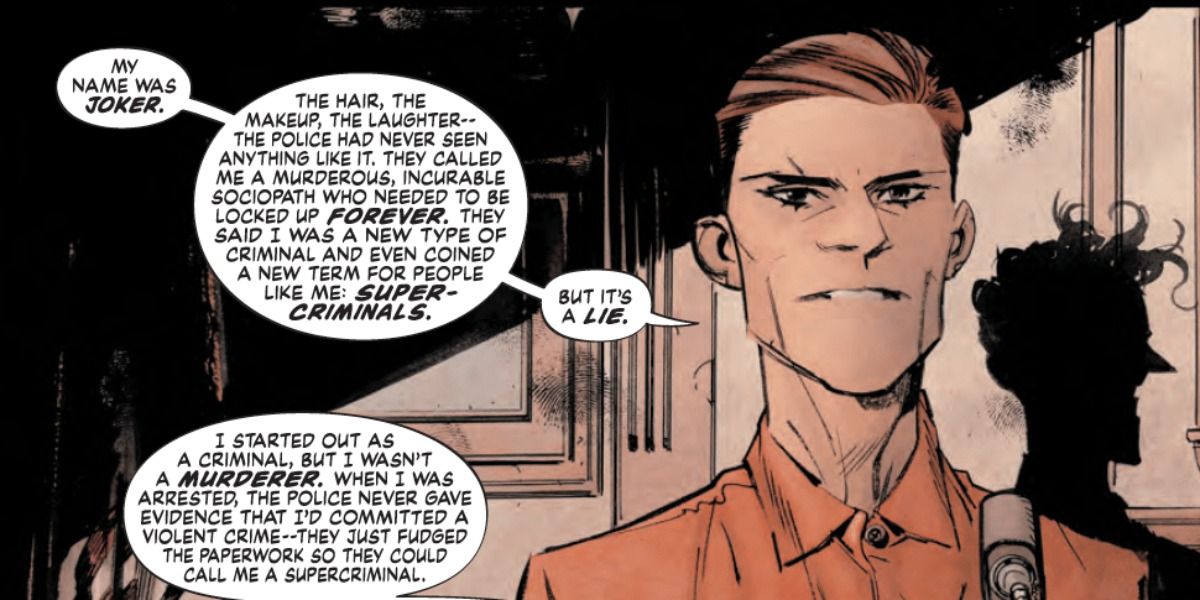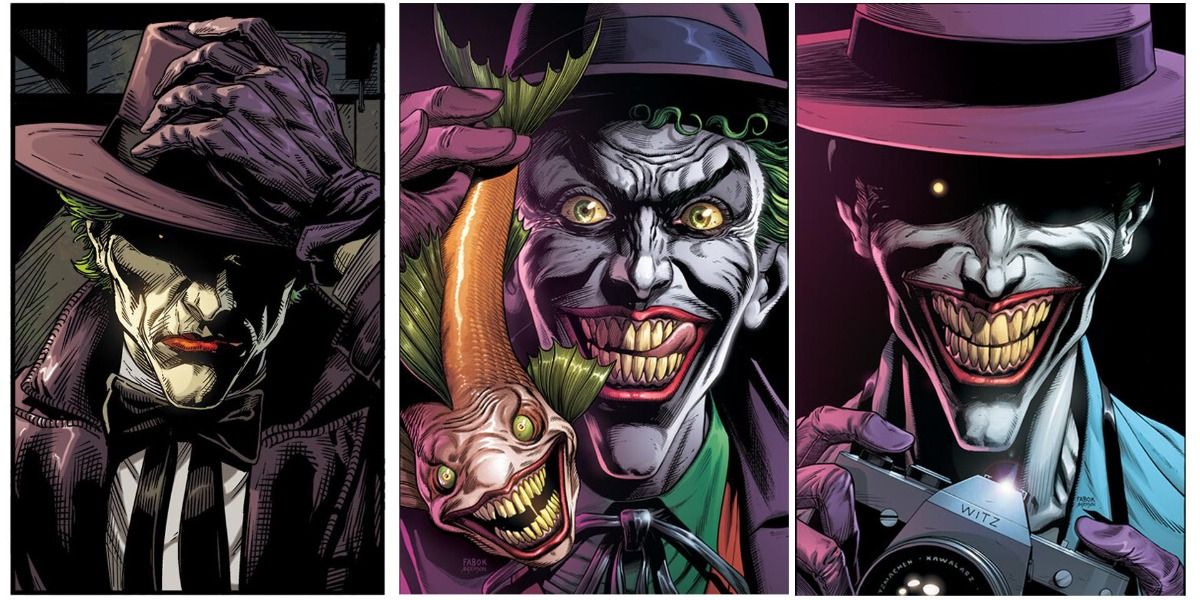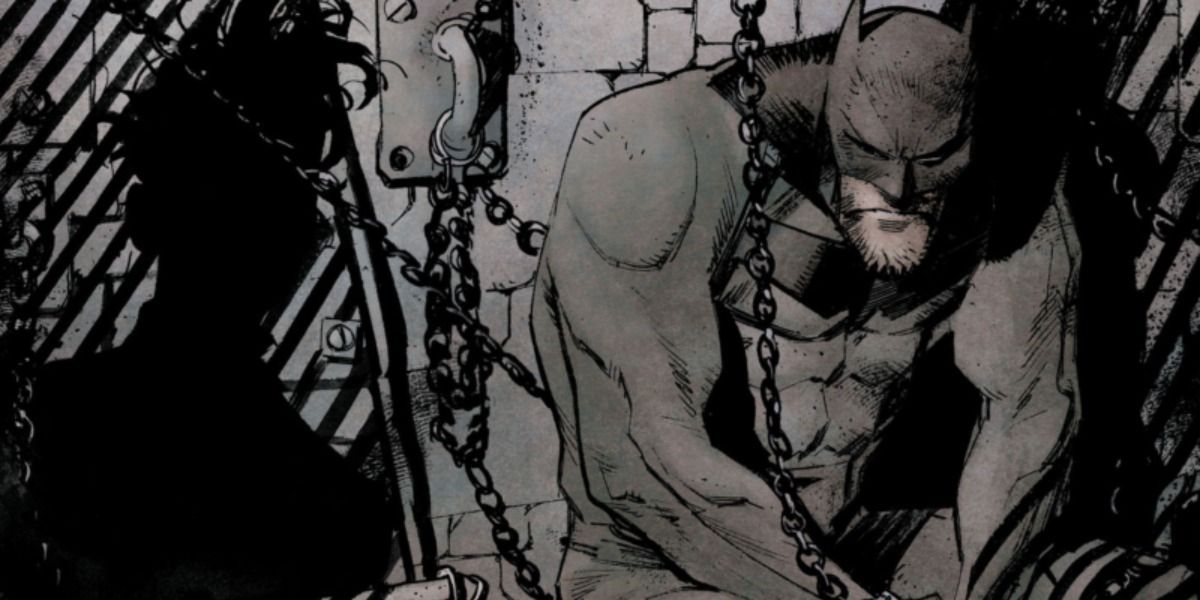The Joker has been around for quite some time, earning the mantle of Batman's greatest nemesis, with The Clown Prince of Crime having many great stories to his name. While stories like "Mad Love," A Death In The Family," and "Soft Targets" are great, there are two stories that reign supreme.
For years, Alan Moore and Brian Bolland's graphic novel Batman: The Killing Joke was seen as the definitive Joker story, then Sean Gordon Murphy created Batman: White Knight. Both stories have their advantages, but if The Joker was going to have a favorite, he'd prefer it to be multiple choice.
Killing Joke: It's A Classic
There's something to be said about the impact that nostalgia has on a story's legacy, with many people being highly nostalgic for The Killing Joke. In contrast to its humble beginnings, Killing Joke is still considered one of the top-tier Batman stories.
Though the story wasn't actually meant to be a replacement for a canceled Batman/ Judge Dredd story, the story has grown to be so much more than Moore and Bolland could've ever imagined. Though Moore claims he hates the story now, that does little to affect its legacy.
White Knight: It Feels Fresh And New
What if The Joker was cured? A question that's been asked before, but one that White Knight approaches in a whole new way. While it draws elements from several prior incarnations of Batman, Batman: White Knight feels like something fans have never seen before.
Exploring a scenario where The Joker manages to wage a political war on Batman, the story feels fresh and new in a way that Killing Joke can't anymore. Killing Joke isn't outdated, it's just that White Knight still has that new car smell.
Killing Joke: It Defined Who The Joker Was
Joker is a very complex character, with The Killing Joke making that abundantly clear. Forever shaping fans' opinions on The Clown Prince of Crime, The Killing Joke showcases what The Joker would be for decades to come.
At the same time, Joker shows his duality, with some scenes showing him as far more sympathetic than normal and some far less. Though that may seem inconsistent, The Joker is quite the lover of multiple choice so it does fit his brand.
White Knight: It Takes Risks
Before Black Label, Sean Gordon Murphy used White Knight's aim for a more mature audience to show a whole new side to the DC Universe. Exploring far more adult themes than most of DC's stories felt comfortable with at the time, Murphy's story shows what an R-Rated Batman story could be.
While Black Label would use their standing to show Batman's genitals, Murphy's story feels less juvenile and try-hard, though it isn't afraid to show some skin. Though the story's nudity was reserved for a reprint, the violence and coarse language made the cut the first time around.
Killing Joke: It Took Risks First
White Knight's more mature Joker was reserved for a separate continuity, but The Killing Joke takes place within the confines of the standing DC continuity. That certainly didn't stop Moore, as he wrote a story that would have ripple effects for decades to come.
Sadly it's not all sunshine and rainbows, as not only did the story crystalize The Joker, but it came at the cost of Barbara Gordon. The move to have Joker paralyze Barbara Gordon was a controversial one to say the least, with fan backlash towards the move being bolstered by Alan Moore, who admits he regrets the move.
White Knight: Not Bound By Continuity
Killing Joke was actually supposed to be non-canon, but it was so impactful that it was incorporated into the DC Universe. White Knight won't be the status quo for Batman anytime soon, but its separate continuity gives Murphy a chance to do something different.
Throughout the series, The Joker is cured, Mr. Freeze is revealed to be the son of a Nazi scientist, Alfred dies, and it's revealed that Joker never actually killed Jason Todd. White Knight struck such a chord with fans that it spawned The Murphyverse, a place where Murphy and his friends can play with their toys.
Killing Joke: Compelling Questions Are Raised
Several questions are raised in The Killing Joke, with a good portion of them revolving around The Joker. One question the comic asks is simple...where did The Joker come from? The story flashes back to a potential origin for The Ace of Knaves, but doesn't commit to it being the real one.
A far more famous, more complex question the story raises is this... did Batman kill The Joker at the end? Though some have interpreted it as Batman laughing so hard at Joker's joke that he has to grab Joker's shoulders to balance himself, many claim that the comic's final panels show Batman strangle Joker to death, thus making Joker's final words the killing joke.
White Knight: Joker Is Right
How far can Batman go in the pursuit of justice? That is the question raised by The Joker in White Knight, as The Caped Crusader's escapades in the story cause massive collateral damage that only benefits the one-percent.
Murphy's story has been described by some as a Batman story that doesn't love Batman, with White Knight showing that Joker is right. Meanwhile, The Killing Joke has Joker posit the idea that everyone is one bad day away from madness, but is proven to be completely wrong.
Killing Joke: Referenced To This Day
References to The Killing Joke are pervasive in DC Comics and even in Batman-related media. Tim Burton, the director of Batman from 1989, has said that it's the first comic he ever loved, while the comic was adapted into an animated movie to...mixed results.
Recently, writer Geoff Johns and artist Jason Fabok created Three Jokers, a Black Label pseudo-sequel to The Killing Joke. Even when DC messed with important stories like Batman: Year One in order to fit their agenda, Killing Joke remained intact due to the reverence surrounding it.
White Knight: Batman Is An Actual Character
If The Killing Joke has one flaw outside of its treatment of Barbara Gordon, it's that Batman is two-dimensional at best. Though that was intentional, it means that Moore isn't playing with a full deck when it comes to Joker's relationship with The World's Greatest Detective.
White Knight offers a far less monolithic Dark Knight, portraying him as flawed and giving him a journey that changes him in the end. Batman is no angel in the story, but Murphy offers him more depth than Killing Joke does.

